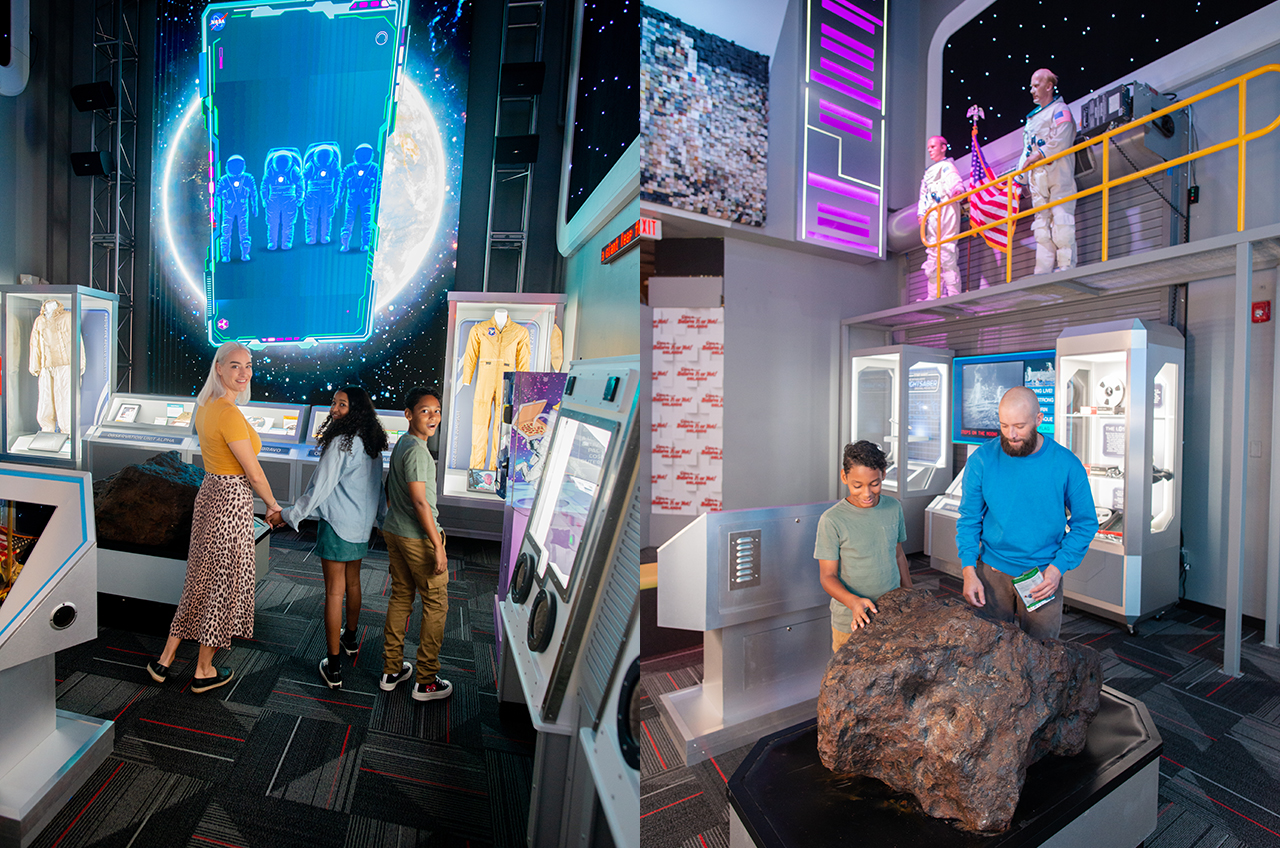If seeing is believing, then a new space-themed attraction has something to show you.
Ripley’s Believe It or Not! Odditorium in Orlando, Florida has opened its “Out of This World” gallery, featuring a truly unbelievable exhibit — “The Lost Tapes” from NASA’s Apollo 11 moon landing (opens in new tab). The display reveals that it was Ripley’s that paid $1.82 million for the three reels of 2-inch (5 centimeters) videotape that were auctioned by Sotheby’s in 2019.
“Ripley’s Believe It or Not! is honored to be a part of giving this near-tragic tale of lost media a happily ever after,” said John Corcoran, Ripley’s exhibits director, in a statement released on Monday (Nov. 14). “These tapes are a pivotal part of history. We are proud to be the stewards of such an iconic artifact and are excited to be able to tell their unbelievable story.”
Believe it or not, the lost Apollo tapes that made headlines (opens in new tab) worldwide remain lost to history. Those reels, which contain the telemetry for the slow-scan TV record of the first moonwalk, were most likely erased and reused for later NASA missions, according to a NASA investigation. Had the data been preserved, modern technology may have been able to produce a clearer view of Neil Armstrong and Buzz Aldrin on the moon as compared to what millions saw live on their television sets on July 20, 1969.
Related: Facts about NASA’s historic Apollo 11 moon mission
Instead, what Ripley bought and has now placed on display under the title “The Lost Tapes” (opens in new tab) is an incomplete but contemporary-to-the-mission copy of the same footage converted for TV broadcast. The reels were originally purchased among a collection of more than 1,000 magnetic tapes that were sold through a 1976 government surplus auction. The then-NASA intern who bought the lot held onto them for 40 years before hearing about the search for the lost 14-track data tapes.
Sotheby’s, and now Ripley’s, described the TV broadcast recordings (opens in new tab) as being of better quality and sharper than network television broadcast copies. NASA, in response to the 2019 auction, issued a statement that said the three reels “contain no material that hasn’t been preserved at NASA.”
The “Out of This World” exhibit does not include a view of the two hours and 24 minutes of “unrestored, unenhanced and unremastered” footage. Still, it is not every day that the public can come within arm’s length of three, 53-year-old reels that sold for nearly $2 million, and there is more than just the tapes on display.

Visitors to Ripley’s gallery can touch a 3,197-pound (1,450 kilograms) meteorite and see the prop lightsaber that was used by Luke Skywalker (Mark Hamill) in the 1980 movie “Star Wars: The Empire Strikes Back.” Other exhibits include a pilot’s jumpsuit worn by Apollo 11 astronaut Buzz Aldrin; an uncashed $300,000 check signed by Neil Armstrong and written out to his son, Mark; a piece of microfilm containing 50 pages from the bible that was flown to the moon; and prototype Gemini G2-G gloves that were assigned to Alan Shepard, the first U.S. astronaut to fly into space.
The “Out of This World” gallery also includes a 16-foot-tall (5 meters) interactive video wall that will be used to stream rocket launches live.
Ripley’s Believe It or Not! Orlando Odditorium (opens in new tab) is located at 8201 International Drive and is open from 10 a.m. to 10 p.m. Sunday through Thursday and 10 a.m. to 11 p.m. Friday and Saturday. Access to the new “Out of This World” gallery is included with general admission.
Follow collectSPACE.com (opens in new tab) on Facebook (opens in new tab) and on Twitter at @collectSPACE (opens in new tab). Copyright 2022 collectSPACE.com. All rights reserved.

